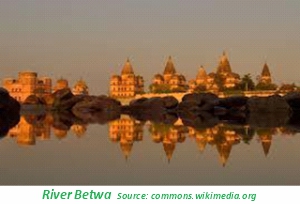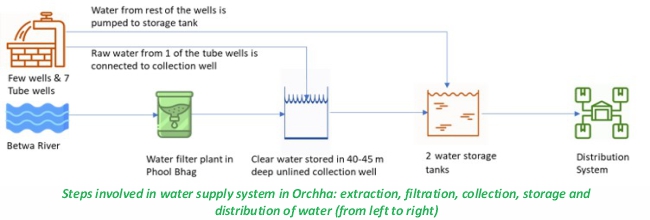Water Flow Analysis for Cities
Half
of the Indian population will be living in cities by the
 year 20301.
The unprecedented push from villages into towns and cities over the last few
years and inadequate management of water and wastewater systems has led to a
large demand-supply gap in basic services in urban areas. It is estimated
that India will face 50% water deficit by the year 20302. Tier 1
cities get benefit of various central and state schemes such as the Smart
City Mission (SCM) and Atal Mission for Rejuvenation and Urban
Transformation (AMRUT), but towns and smaller cities lag behind, bringing to
the fore the need to develop service models for regions with urban-rural
characteristics.
year 20301.
The unprecedented push from villages into towns and cities over the last few
years and inadequate management of water and wastewater systems has led to a
large demand-supply gap in basic services in urban areas. It is estimated
that India will face 50% water deficit by the year 20302. Tier 1
cities get benefit of various central and state schemes such as the Smart
City Mission (SCM) and Atal Mission for Rejuvenation and Urban
Transformation (AMRUT), but towns and smaller cities lag behind, bringing to
the fore the need to develop service models for regions with urban-rural
characteristics.
Orchha, famous for its historic architecture is a small landlocked town in the state of Madhya Pradesh. Main sources of water in the town are Betwa river, wells and tube wells. The total water supplied in the town is 0.35 MLD limited to an hour on average and alternate days during summer with only 35% piped water connections and the remaining covered through tankers operated by the Nagar Nigam3. The distribution lines are dilapidated with an average of 7-10 leaks reported daily and inadequate storage capacity. The town has insufficient sanitation facilities with only 66% having access to in-house toilet facilities and remaining, defecating in open spaces resulting in contamination of groundwater through the infiltration of wastewater4. With no sewerage system, the town faces contamination of stormwater drains by wastewater. Newer dwellings are installed with septic tanks but most lack soak-pits resulting in half-treated effluents to flow into open drains or natural drainage channels5.
2011 Orchha City Development Plan aims to achieve 24*7 water supply, 100% sewerage connection, sanitation facilities and stormwater drainage by 20356. Building individual capacities by orienting ULB officials towards integrated systemic approach and water flow analysis of the supply system and shift from conventional system to decentralised cost-effective solutions with focus on circularity will help in achieving the development goals. The water flow analysis done by material flow analysis software helps in digitally drawing and visualising the system with material, energy & emission footprint data points at each node of the life cycle of water.

The decentralised solutions for wastewater management and reuse at small scale, and smart metering and digital mapping will aid in revenue generation along with reduced O & M costs of municipalities. New alternative circular models like using nutrient-rich solid faecal sludge as manure for agriculture will be an icing on the cake. Inclusion of all stakeholders like individuals and citizens groups and civil society through active collaborative participation will create a sense of ownership in them to bring a positive change. The integration of decentralised technologies into the system coupled with carefully laid institutional frameworks and community engagement will help small cities like Orchha in sustainably managing its water resources and infrastructure. ■
End notes
-
https://www.thehindubusinessline.com/economy/policy/half-of-indias-population-will-be-living-in-urban-areas-by-2030-says-puri/article9891352.ece
website accessed on 12-11-2020, 15.00 pm -
http://www.waterindia.com/about-us.aspx
Website accessed on 12-11-2020, 15.30 pm -
https://www.nature.com/articles/s41545-020-0068-4
Website accessed on 12-11-2020, 15.15 pm -
4&6 https://www.scribd.com/fullscreen/66803323?access_key= key-t72z643i7nl8er9smpf
Website accessed on 12-11-2020, 16.00 pm -
https://orchha.org/sanitation.php#:~:text=The%20region%20is %20prone%20to,of%20piped%20water%20has%20suffered.
Website accessed on 12-11-2020, 16.30 pm
Siddharth
Jain and Sherine TP
sjain@devalt.org, stparakkal@devalt.org